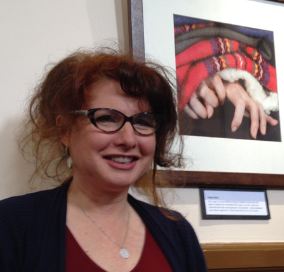 The artworks in Betty-Jean Dee-Price’s SALA exhibition don’t set out to be pretty.
The artworks in Betty-Jean Dee-Price’s SALA exhibition don’t set out to be pretty.
‘The Meaning of Home and Place for People with Complex Communication Needs’, which opens at the North Adelaide Community Centre today (August 7), is a show that will provoke and confront because it speaks on behalf of people whose disabilities severely affect their ability to communicate.
Many of them, says Ms Dee-Price, live lives of unimaginable isolation, frustration and powerlessness.
Ms Dee-Price, a doctoral student in the Southgate Institute of Health, Society and Equity at Flinders University, is part curator, part artist of the SALA exhibition: more importantly, she says, the art acts as a conduit to communicate something of the lives and experiences of the 10 people she interviewed as the basis for the exhibition.
“Most of these are people without voices, who are nearly completely hidden from view,” Ms Dee-Price says.
Her thesis research on the sense of place and home among people with complex communication needs (CNN) inspired the art project, prompting her to speak to a group of people with needs associated with conditions such as cerebral palsy, stroke, autism and multiple sclerosis.
Ms Dee-Price interviewed the participants in settings that ranged from family homes to nursing homes to institutional care. Some could speak, if indistinctly; others relied on gestures, eye movements or communication devices to make their answers known.
Until recently, research has relied heavily upon verbal and written communication as a vehicle for gathering data, says Ms Dee-Price. This has led to few attempts being made to gather the thoughts, opinions and experiences of people with CCN in comparison with people with disabilities who have communication access.
Her work for the exhibition has been important in helping to establish a methodology that is capable of transcending traditional language barriers.
As a form of shorthand, Ms Dee-Price used a selection of images of hands as a theme and starting-point to elicit ideas and feelings around the concept of ‘home’. Her questions drew out responses that ranged from the desperate to the uplifting, which have been translated into pictorial form, again using photo-montages and collages of hands as the medium.
She also drew on ‘sensory ethnography’ – observation of sights, sounds and smells – to inform her interviews.
Ms Dee-Price said that the responses tapped into often uncomfortable truths.
She said lack of physical capacity brings a reliance on assistants or carers that can also become a lack of control and agency. She says that in institutions, in particular, depersonalised utility can be lead to the erosion of identity, health and well-being.
“People in these settings, often have few choices in their lives, from where they live, who they live with, when they shower or even how their hair is styled,” Ms Dee-Price said.
“The question we have to start to ask is: how does our community provide the type and level of care that will allow these people to shape their lives – to live a good life?”

